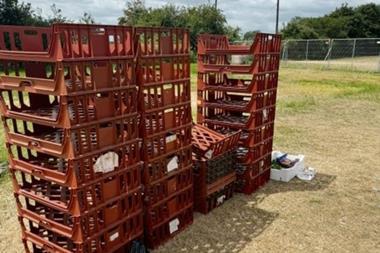Gareth Howlett, Senior associate, at law firm Blake Morgan, looks at how Company Voluntary Arrangements (CVAs) work, and asks if they are right for every business?
Gareth Howlett, Senior associate, at law firm Blake Morgan, looks at how Company Voluntary Arrangements (CVAs) work, and asks if they are right for every business?
In 2016, Wigan-based craft bakery chain Waterfields joined a long line of companies to use a Company Voluntary Arrangement (or CVA). Retailers including Monsoon Accessorize, Debenhams and Arcadia have also used CVAs in an attempt to safeguard their futures on the high street.
While intended as a mechanism for businesses to stave off insolvency and protect jobs by renegotiating liabilities, there are fears in some quarters CVAs are being abused, as well as around the knock-on effect on landlords, suppliers and employees.
What is a CVA?
A CVA is an insolvency process a struggling business can enter into, allowing it to continue operating. The purpose of a CVA is to enable a company to negotiate the repayment of its debt with unsecured creditors, rather than filing for liquidation or insolvency.
What are the advantages?
There are many reasons why CVAs are used as a mechanism to save a company from collapse:
- Company control: One major advantage is that a company director retains control. While liquidation and administration remove a company director’s powers, they are still entitled to keep control of the company with the CVA procedure.
- More flexibility, less scrutiny: CVAs allow more flexibility in the way the company is run, with relief from creditor pressure and costly legal action. A licensed insolvency practitioner will assist the company with the CVA proposal and, once approved, creditors are bound by its terms and cannot take further legal action.
- Margin for change: During the CVA process, which can last three to five years, the company is free to make restructuring changes. In a CVA, retailers can terminate unprofitable contracts and can make staff redundant more easily. This makes a CVA attractive where the company is weighed down by unprofitable contracts or is over-staffed.
- Better chance of returns: CVAs often provide the optimal outcome for creditors and directors. While creditors may not receive all monies owed, they can recover more than they might through winding-up orders. It is in their best interests for the company to succeed, and the CVA process can even improve the returns a business makes, meaning the company can recover more for creditors.
What are the downsides?
However, the disadvantages of CVAs also need to be considered, and may include the following:
- Credit issues: Once a CVA is issued, a company’s credit score falls to zero, which makes accessing credit from banks and suppliers difficult. This may harm the company’s ability to trade.
- Cost burden: Despite being interest-free, it can take years to pay off debts under a CVA, making it a solution best suited to companies with a long-term approach. Alternative insolvency solutions or using short-term finance may be better-suited to certain companies.
- 75% of creditors need to agree: The agreement does not bind secured creditors. The fact a bank with a legal charge, for example, is not bound by the terms of a CVA leaves companies open to administrators being called in, even when the agreement is adhered to. If a CVA fails for some reason, such as not keeping up with repayments, creditors can take legal action against the company. That is why it is essential to ensure any agreement is drafted with long-term recovery in mind.
- CVA exploitation: Landlords have been critical of what they view as the misuse of the CVA process, as highlighted by the case of House of Fraser. There is a genuine concern that the CVA structure is being used to avoid onerous lease liabilities rather than to restructure the business.
Conclusion
There are positive and negative aspects to consider when deciding whether adopting a CVA is the best option.
It is worth remembering that a well-constructed CVA is one of the few routes out of debt, which allows the company to remain open, trading and with an active director, while in parallel allowing creditors and landlords to make a steady return. However, and as shown by Toys R Us and Maplin, a CVA is no guarantee of a company’s future.


























No comments yet